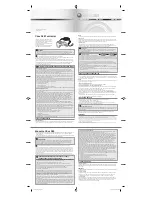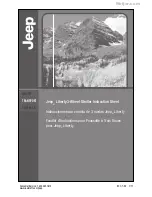
Page
67
of
92
Supported Feature
Controllers
Bus
Eleme
nt
Bit
0-31
Polarity
N.O./N.C.
Width
Offset
iEC
iAC
iPC
iB
C
iBC-
Z
Log Change
√
√
√
√
√
√
√
√
√
√
Decrement Batch
√
√
√
√
√
√
√
√
Increment Batch
√
√
√
√
√
√
√
√
Click Wrench
√
√
√
√
√
√
√
√
√
Bypass Stops
√
√
√
√
√
√
√
√
√
Verify Job Sequence
√
√
√
√
√
√
√
√
√
√
ASCII ID
√
√
√
√
√
√
Polarity
When the polarity is set to N.O. the input is considered active high (24vdc for physical inputs and
logic 1 for all network type buses). When the polarity is set to N.C. the input is considered active
low (0vdc for physical inputs and logic 0 for all network type buses).
Width and Offset
For multiple bit inputs (for example “Select PSet”) the width variable defines the number of bits
the assignment will read for its input. This allows the input size to be restricted to a few bits saving
space for other assignments.
The offset variable allows a fixed value to be added to the read value.
For example to use bits 4 & 5 of the physical inputs to select parameter sets 1-4 the assignment
would look like:
Select PSet
Bus
1
For the physical bus
Element
0
For the first element on the bus
Bit
4
For the starting bit location
Width
2
To span the two bits 4 & 5
Offset
1
Adding 1 to the read input value so we get…
Binary 00 = 1
Binary 01 = 2
Binary 10 = 3
Binary 11 = 4
Assignments
Do Nothing
Supported Feature
Bus Element
Bit
0-31
Polarity
N.O./N.C. Width Offset
√
√
√
The “Do Nothing” assignment will run do nothing if it is active or inactive.
Stop
Supported Feature
















































